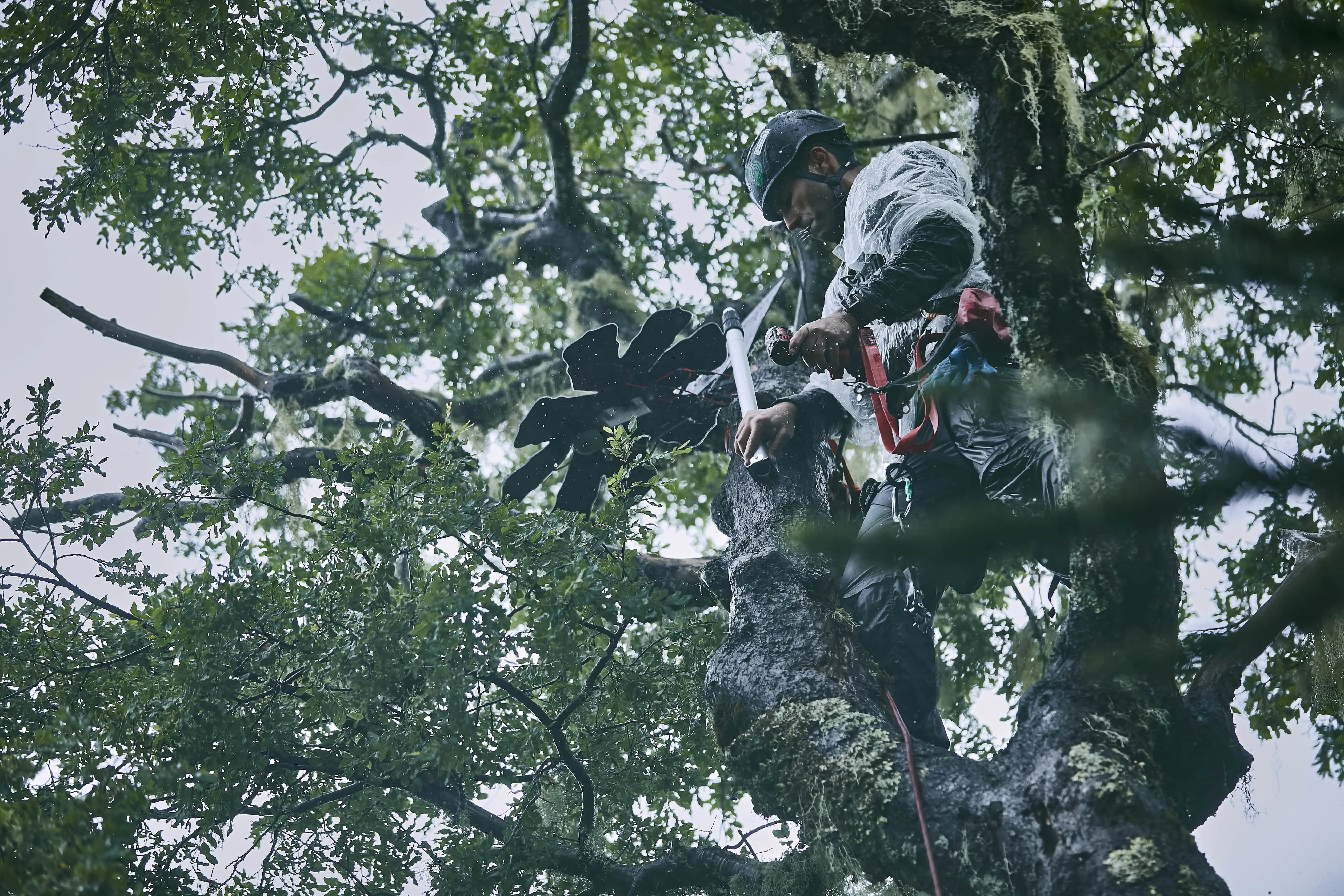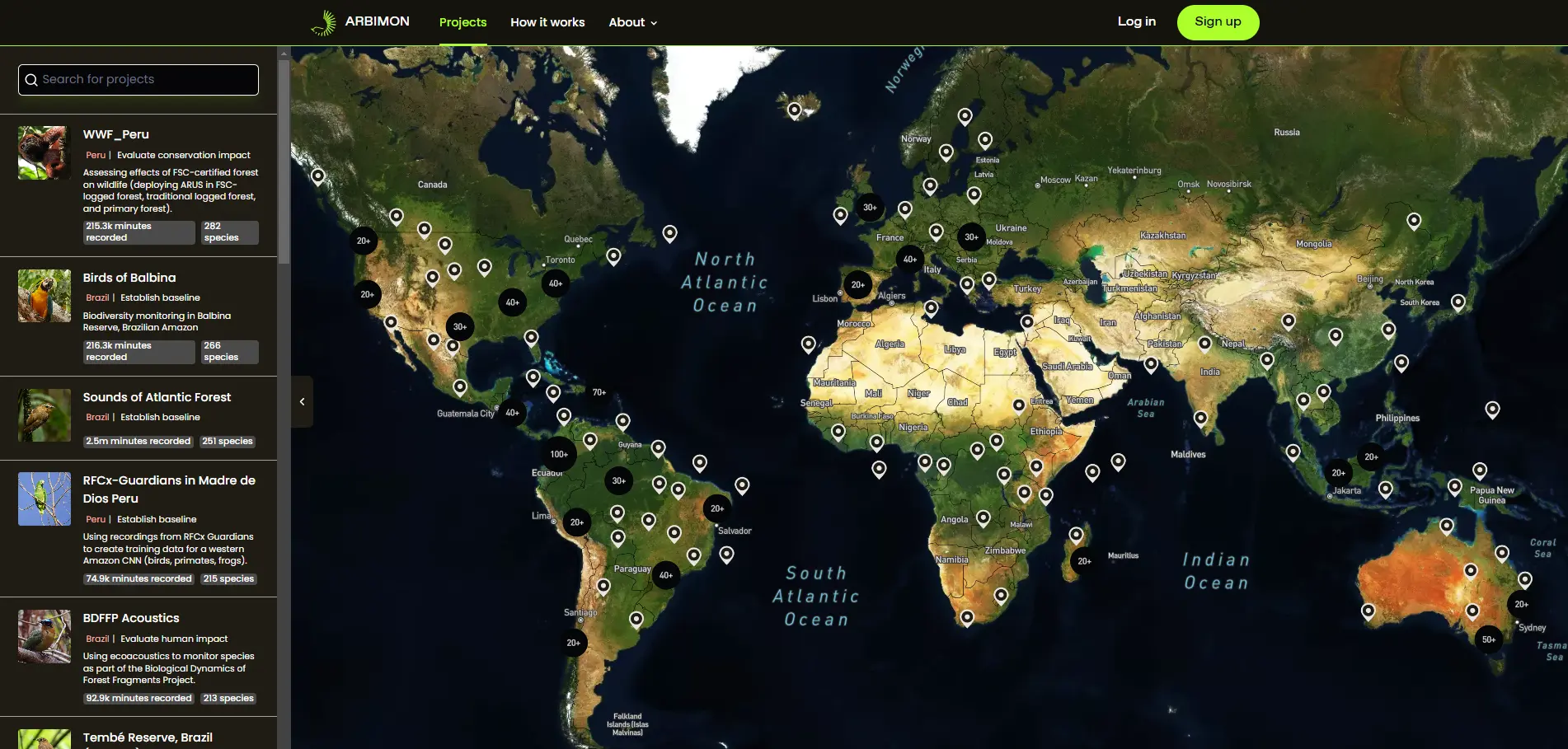
AI is listening to the forests. It could be a lifeline for species at risk.
Published on March 29, 2024
Machine learning in the field of eco-acoustics is allowing scientists to catalog wildlife where they otherwise couldn’t. Here’s how it could change conservation.
To understand what’s happening in the world's remote forests, crucial for both the resident species and the planet's health, we must catalog their contents. The challenge? It's a task that's difficult and expensive to perform manually. Enter acoustic monitoring: by “listening” to the soundscape of a place via autonomous recorders, scientists can gain insights into the presence and behavior of various species, environmental conditions, and even human activities impacting natural habitats.
Leading the charge in the eco-acoustics field is Rainforest Connection, an organization that started back in 2014 with the purpose of detecting illegal logging via autonomous listening devices—modified cell phones, mounted to trees. Now, with the help of AI, Rainforest Connection is expanding its mission.
Its free-to-use Arbimon software employs machine learning to analyze the massive volume of data collected by recorders. This enables automated species detection, allowing scientists to gain insights into a landscape’s biodiversity in seconds. The platform hosts over 230 million recordings from 119 countries and is growing. It’s been used to identify and monitor rare species from mangrove finches in the Galapagos to jaguars in the Yucatan.
Bourhan Yassin, Rainforest Connection’s CEO, says that the use of artificial intelligence has made daunting and unlikely research projects newly possible: “Without AI, there's no way you could do this at scale.”
“Without AI, there's no way you could do this at scale.”—Bourhan Yassin
Rainforest Connection existed before you came on board. What the company was doing in the early days and how it has shifted?
The company started as a Kickstarter project in 2014 focusing on detecting illegal logging through sound, using cell phones equipped with [solar batteries, microphones, and] custom software to detect sounds of chainsaws. The idea resonated quite a bit with people. It also worked decently on the ground.
By the time I joined Rainforest Connection in late 2016, we were a small team. From 2019, significant grants have allowed us to scale. Now we use sound not just for logging detection, but to study and measure biodiversity. We’ve introduced tools and freely available services for the science community.
2019 is also when you found Arbimon and began working with Artificial Intelligence. How did that change your work?
Arbimon was originally a project at the University of Puerto Rico. It uses machine learning and convolutional neural networks trained to detect very specific sound signatures, species calls, and other distinctive sounds.
With Arbimon, you can upload audio that you've recorded from the field, and an AI model can detect the presence of the species in that data. It does that very, very, quickly. If you compare that to the typical field of bioacoustics without AI, a biologist would spend 10 to 15 minutes analyzing a single 60-second audio file to detect a species. They'd have to listen to it multiple times. Imagine someone has collected 10,000 recordings. With AI machine learning and the help of Arbimon, you can do that analysis in seconds.
After identifying species, Arbimon can overlay this information on top of maps, telling you where species are located. It starts giving you a very good indication of what the health and biodiversity in that area is. Right now, it has over 155 million recordings uploaded from 120 different countries. It's by far the largest platform in the world for biodiversity monitoring using sound.
“An AI model can detect the presence of a species...very, very quickly.”
One of the goals of Rainforest Connection is to use data to inspire real-world actions. Are there examples of changes that have been made thanks to Arbimon?
One example is an active project over the entire island of Puerto Rico, in collaboration with U.S. Fish and Wildlife Service, Puerto Rico Department of Natural and Environmental Resources, and local organizations. We've collected over 7 million recordings from 900 different sites. The goal has been to look at the protected areas that have been established decades ago and see if [they need to be remapped] based on the changing climate over the last 30 or 40 years.
Based on the information that we were able to gather, we created what we call the ”most suitable area for species”—where certain species are the most likely to prosper. [The data shows that] Puerto Rico is getting drier and that species are moving to higher elevations. The most suitable areas that were generated using the data did not match the protected areas that were established by the government. So the data can suggest where the government and local organizations can go in and consider remapping protected areas where species are already migrating.
Another example is in the Atlantic Forest, one of the most biodiverse areas in Brazil. We work with a great organization there that primarily focuses on restoration projects, planting trees. The reality is that in many cases, planting trees is not enough to restore biodiversity. We’re able to assess restoration projects and whether they work. What they're doing in the Atlantic Forest is actually bringing biodiversity back by taking the right measures based on the data.
You've also talked about how data can be used to make predictions for places that we don't have field recordings. Can you talk to me a little bit about that?
A technique used by scientists is occupancy of species prediction, based on a sample. It's kind of like how political polling works. We can survey only particular section samples and map out the entire area based on these predictions. We can also use variables: what the neighboring biodiversity looks like, what the baseline looks like, etc. And that all allows us to make certain predictions.
Another unexplored science is using species behavior to predict events that are about to happen nearby.
“[They're] bringing biodiversity back by taking the right measures based on the data.”
When you say predict events, what do you mean?
Human disturbances. We've had applications where birds in Peru will start vocalizing with an alarm call much earlier than we could detect other humans in the forest making noise. We only detected the humans when they’re making noises like driving a truck or using a chainsaw. The birds knew before that. So we can use that as a predictor of a future event that's about to happen, and perhaps even stop a single tree from being cut down. We've also seen instances with spider monkeys in Costa Rica starting to vocalize before an earthquake happens. There are a lot of unexplored things I think would be pretty cool to look for more into.
How important do you think AI will be in conservation moving forward?
The reality is, to protect biodiversity and give us a fighting chance, humans cannot do it all. So being able to use AI to process these vast amounts of data and give us these predictions is critically important. I don't see another option to give us an opportunity to be able to make any progress if we don't use AI to help.
This interview has been edited and condensed for clarity.

 Dropbox Dash: The AI teammate that understands your work
Dropbox Dash: The AI teammate that understands your work
_Alto%20Rio%20Guam%C3%A1%20Indigenous%20Land_Brazil2-min.jpg/_jcr_content/renditions/Copy%20of%20Cream-colored%20Woodpecker%20(Celeus%20flavus)_Alto%20Rio%20Guam%C3%A1%20Indigenous%20Land_Brazil2-min.webp)














.png/_jcr_content/renditions/hero_square%20(1).webp)

.png/_jcr_content/renditions/hero_wide%20(1).webp)



.png/_jcr_content/renditions/hero_square%20(3).webp)
.png/_jcr_content/renditions/blog%20(1).webp)

.png/_jcr_content/renditions/hero%20(1).webp)
.png/_jcr_content/renditions/hero_wide%20(1).webp)














































.png/_jcr_content/renditions/1080x1080%20(1).webp)










.gif)







































































.png)
.png)
.png)
.jpg)
.jpg)













































































































































































































































































































































































